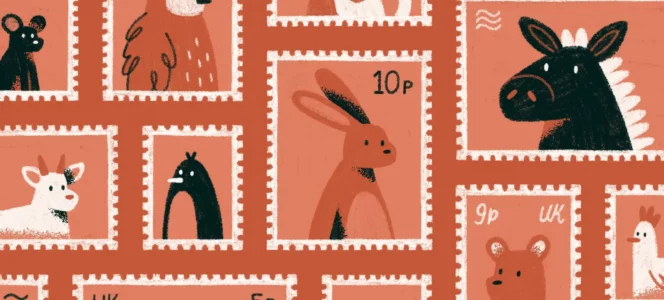Dos
1. Provide as much clear information as possible when reaching out to an illustrator.
In your initial contact, give the illustrator as much information as you have available to you. If you don’t have all the details right away, that’s okay, but it’s helpful for us to at least have a good overview of the project to get started. We then have something to base our follow-up questions on, and it saves us all time.
Illustration is sold on a license basis, which takes into account several factors, including; how long will you use the work for, where it will be used, how it will be used, and who will be using it. It’s worth giving each of these factors a thought before reaching out so that you have all the information you need to hand.
I recommend reading more detailed information about licensing here.
2. Be familiar with the illustrator’s portfolio and style.
Take some time to explore the illustrator’s portfolio and pull out some examples of work that drew you to them. It’s really helpful for artists to see why you chose to hire them and which direction the project should go in. Finding a few examples and giving some context as to why you enjoy them goes a long way in the briefing process, and will make working with an illustrator much smoother.
3. If you have a budget, please share it.
We understand the hesitancy from your side, but we’re here to provide you with the most value that we can. We are genuinely passionate creatives and take pride in our work, and therefore endeavour to ensure you’re spending your money in a way that will benefit you the most. Giving us a picture of your budget helps us to work out what is achievable, saving time and setting realistic expectations.
4. Be open, honest and clear with us.
We’re nice people, I promise, and kindness will get you a lot further than being defensive or cagey with details. We’re not interested in playing games, so holding your cards close to your chest will only raise red flags. Being honest in your communications and clear about your expectations and goals will mean that both parties are on the same page and working towards the same outcome.
5. Offer actionable, concise and constructive feedback.
When it comes time to review artwork and provide your feedback, ensure that you are clear and focused. Try to keep overly personal opinions out (unless relevant) and keep the purpose of the project in mind. Make sure that the comments you make provide clear direction that the illustrator can act upon, rather than being too vague or abstract. Less ‘that part isn’t saying what we need it to’, and more ‘we need this part to be more child-focused. Keep in mind that feedback is a discussion and not a one-way street, and your illustrator has lots of experience in their niche with a valuable perspective.
6. Bring changes or concerns up as early as you can.
Whether it’s changes to the project’s scope, tweaks to the artwork, or worries about the professional relationship, try to raise those concerns at the earliest opportunity. I’m sure you can relate to the frustration of having the goalposts moved after the fact, and it can save everyone time and resources to know of any requested changes as soon as possible. Changes to scope or deliverables can have a wider impact to consider, but most artists will be happy to work out a solution with you that works for everyone.
7. Share your positive experiences of working with an illustrator.
If you’ve had a great experience working with an illustrator, why not provide them with a testimonial that they can share on their platforms? The vast majority of illustrators are freelancers, so being able to provide evidence of successful working relationships goes a really long way. It also helps them to promote the project, and you too!
8. Give your illustrator credit.
Wherever reasonable, it’s hugely appreciated if you can give a credit to the artist. This could be as simple as ‘Artwork by [Illustrator’s name]’ on the packaging of the product, for example. If you’re able to accommodate a longer credit, a website or social handles would also be greatly welcome.
9. Be prepared to pay a deposit.
Not everyone asks for one, but it’s something you should be prepared for if required. In my experience, this may be especially true if you’re commissioning an illustrator who is in a different country to you. It may feel like you’re paying even though no work has been undertaken, but it’s a payment to secure the artist’s time, who will likely reject or push back other projects to accommodate yours. I once heard it put this way, which I really like: if you pay an up-front deposit of 50%, then both parties are equally invested in the smooth and successful completion of the project!
You may also be asked to pay progress instalments, depending on the size of the project, which is also completely normal.
10. Ask your illustrator questions!
We don’t expect (or even want) you to be an expert in the illustration industry. That’s why you’ve hired us! If you’re feeling unsure about anything happening in the process, don’t hesitate to ask us to provide some insight. We’d hate for you to feel anxious or uncertain about whether the outcome of the project is going to work for the outcome you need. Illustrators have a wealth of experience in their niches, and we want to ensure you feel confident in our understanding of your needs.



